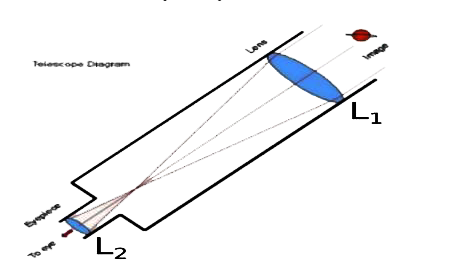Paheli and Boojho observe a bright object in the night sky which was not twinkling. Paheli says, it is a star and Boojho says it is a planet. Who is correct?
Boojho is right because only planets cannot twinkle whereas stars emit light from a far distance and they twinkle.
Topper's Solved these Questions
- BOOK - NCERT EXEMPLARCHAPTER - STARS AND SOLAR SYSTEMEXERCISE - SHORT ANSWER QUESTIONS4videos
STARS AND SOLAR SYSTEM
- BOOK - NCERT EXEMPLARCHAPTER - STARS AND SOLAR SYSTEMEXERCISE - LONG ANSWER QUESTIONS7videos
STARS AND SOLAR SYSTEM
- BOOK - NCERT EXEMPLARCHAPTER - STARS AND SOLAR SYSTEMEXERCISE - LONG ANSWER QUESTIONS7videos
STARS AND SOLAR SYSTEM
- BOOK - NCERT EXEMPLARCHAPTER - SOUNDEXERCISE - LONG ANSWER QUESTIONS5videos
SOUND
Similar Questions
If Boojho covers a certain distance in one hour and Paheli covers the same distance in two hours, who travels in a higher speed?
View SolutionPaheli and Boojho have to cover different distances to reach their school but they take the same time to reach the school. What can you say about their speed?
View Solution
Knowledge Check
- Question 1 - Select One
Sumati wanted to see the stars of the night sky. She knows that she needs a telescope to see those distant stars. She finds out that the telescopes, which are made of lenses, are called refracting telescopes and the ones which are made of mirrors are called reflecting telescopes.

So she decided to make a refracting telescope. She bought two lenses, L1 and L2. out of which L1 was bigger and L2 was smaller. The larger lens gathers and bends the light, while the smaller lens magnifies the image. Big, thick lenses are more powerful. So to see far away, she needed a big powerful lens. Unfortunately, she realized that a big lens is very heavy. Heavy lenses are hard to make and difficult to hold in the right place. Also since the light is passing through the lens, the surface of the lens has to be extremely smooth. Any flaws in the lens will change the image. It would be like looking through a dirty window.
Sumati did some preliminary experiment with the lenses and found out that the magnification of the eyepiece (L2) is 3. If in her experiment with L2 she found an image at 24 cm from the lens, at what distance did she put the object?A72 cmB12 cmC8 cmD6 cm
On the rainy day, Ram reached his grandfather's place in village. On the way to house he saw a beautiful rainbow in the sky. In night, he saw lots of twinkling stars in the clear sky. He was very excited to see these beautiful natural phenomena, which he was not able to see in the city, where he lived with his father.
Answer the following questions based on the situation given above.
(i) Do you think that pollution in atmosphere affects the formation of rainbow and twinkling of stars?
(ii) Do you agree with the fact that pollution-free environment will strengthen such natural phenomena in the cities as well?
(iii) What steps can be taken so that the natural phenomena can be enjoyed in cities as well?View SolutionOn the rainy day, Ram reached his grandfather's place in village. On the way to house he saw a beautiful rainbow in the sky. In night, he saw lots of twinkling stars in the clear sky. He was very excited to see these beautiful natural phenomena, which he was not able to see in the city, where he lived with his father.
Answer the following questions based on the situation given above.
(i) Do you think that pollution in atmosphere affects the formation of rainbow and twinkling of stars?
(ii) Do you agree with the fact that pollution-free environment will strengthen such natural phenomena in the cities as well?
(iii) What steps can be taken so that the natural phenomena can be enjoyed in cities as well?View SolutionState one way in which the planets can be distinguished the stars in the night sky.
View SolutionPaheli and Boojho measured their body temperature. Paheli found her's to be 98.6∘F and Boojho recorded 37∘C. Which of the following statement is true ?
View SolutionPaheli asked for a glass of water from Boojho. He gave her a glass of ice cold water. Paheli observed some water droplets on the outer surface of the glass and asked Boojho how these droplets of water were formed? Which of the following should be Boojho’s answer?
View SolutionBoojho , Paheli and their firend Golu were provided with a test tube each containing China rose solution which was pink in colour .Boojho added two drops of solution 'A' in his test tube and got dark pink colour .Paheli added 2 drops of solution 'B' to her test tube and got green colour.Golu added 2 drops of solution 'C' but could not get any change in colour Suggest the possible cause for the variation in their results.
View SolutionBoojho planned an activity to observe an object A through pipes as shown in Fig. 16.8, so that he could see objects which he could not directly see.

How many mirrors should he use to see the objects?View Solution

